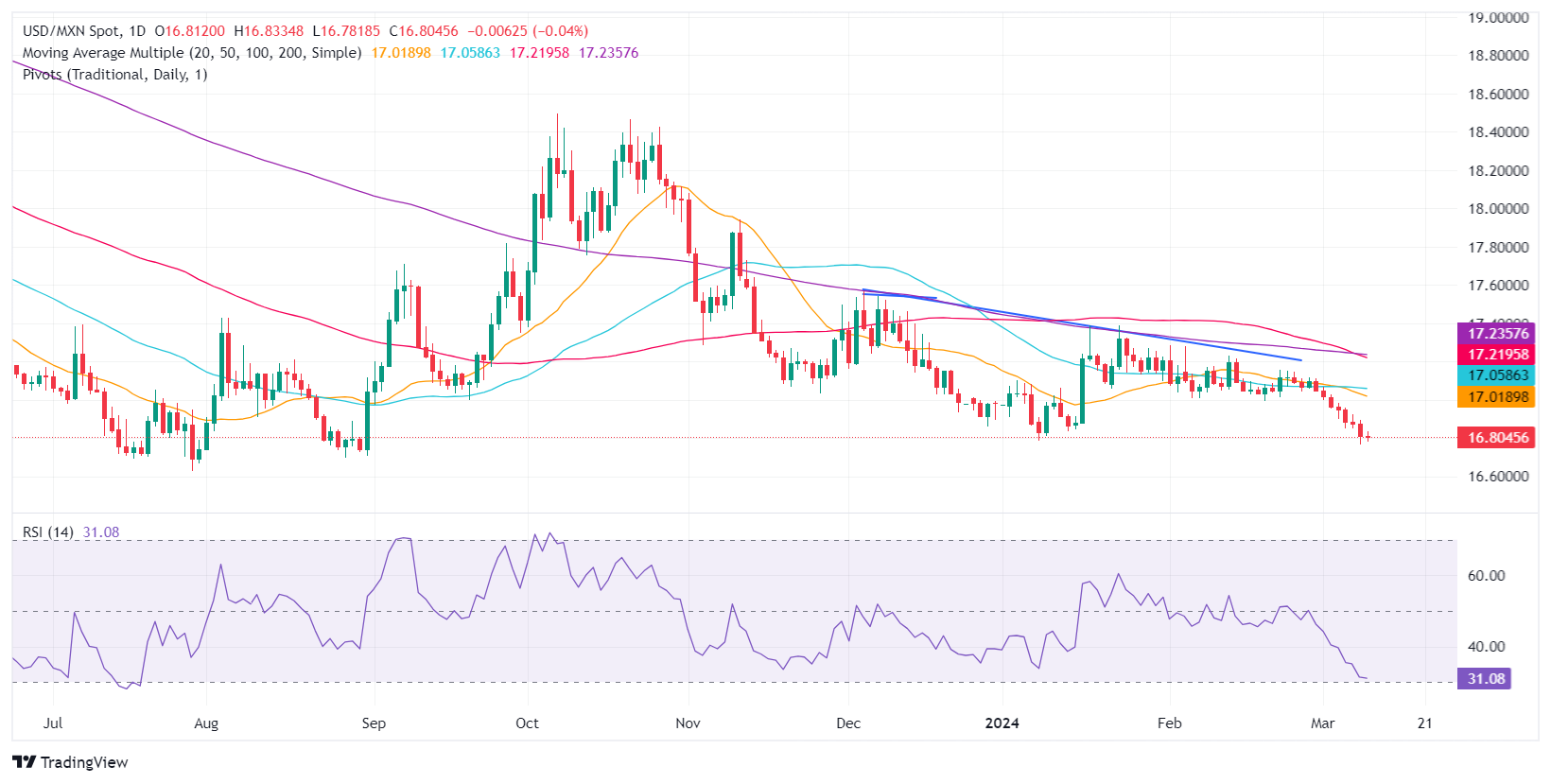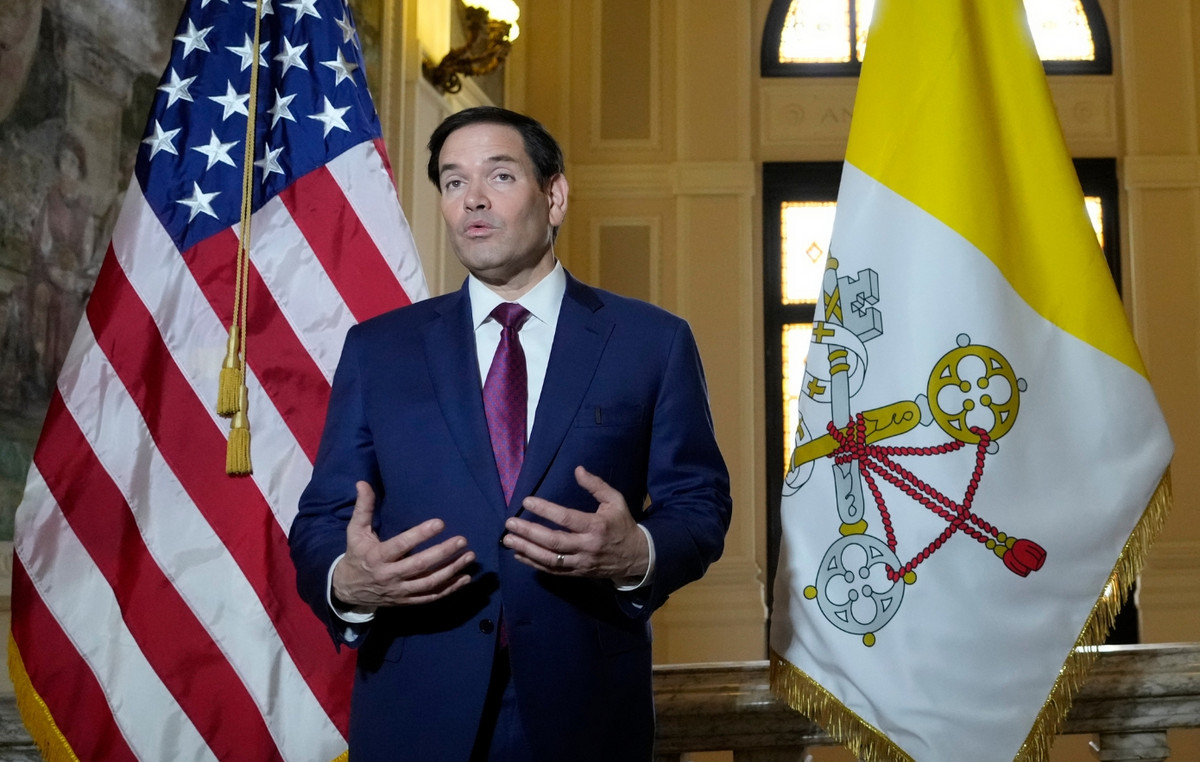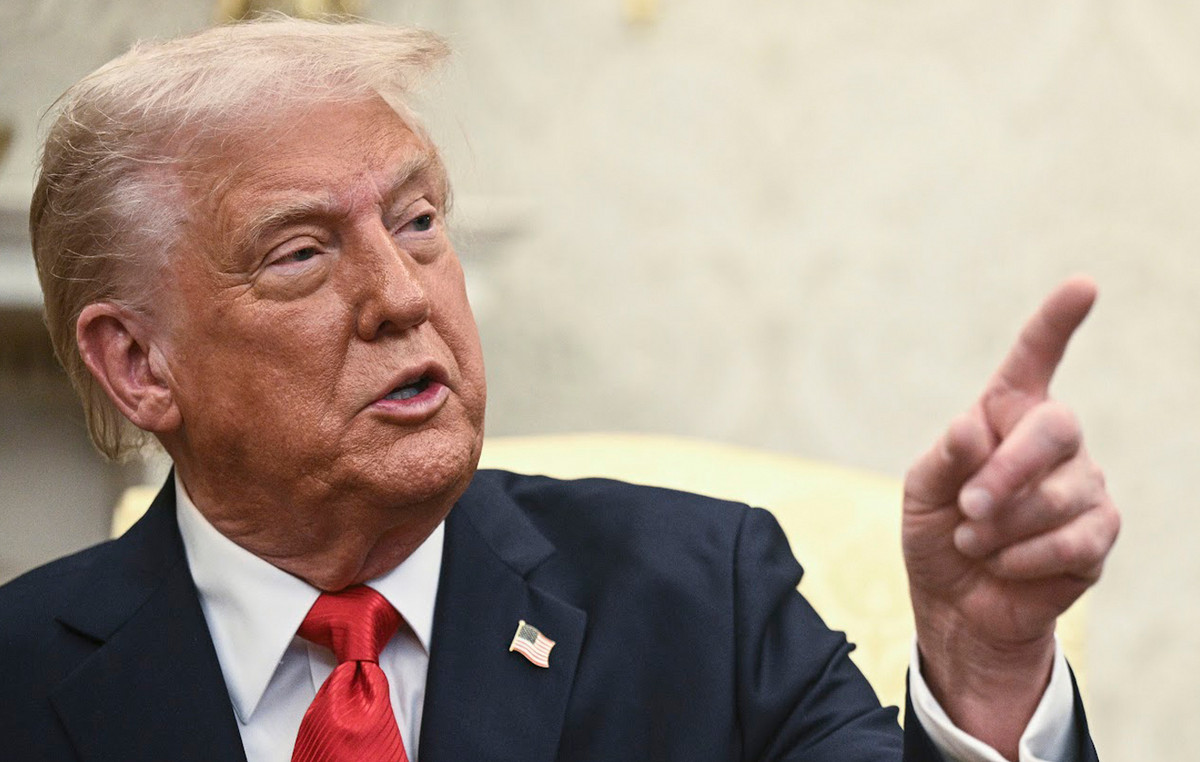- The Mexican Peso declines modestly against the Dollar, reflecting a cautious sentiment ahead of the release of the US CPI.
- The US dollar finds ground after last week's decline, bolstered by adjustments in Treasury yields.
- In Mexico, Industrial Production will be published, and forecasts point to a monthly decline along with annual growth.
The Mexican peso remains practically unchanged against the US dollar this Monday, amid a risk aversion momentum ahead of the publication of the latest inflation report in the United States. The dollar is recovering from last week's losses, while US Treasury yields regained some ground. Despite this, the USD/MXN pair is trading at 16.79, down 0.2%.
On Tuesday in Mexico, Industrial Production will be published, which is estimated to fall -0.7% monthly and grow 2.2%. On the other side of the border, the New York Fed revealed that inflation expectations one year from now stand at 3% and three years from 2.7% to 2.4%. On Tuesday, the US Bureau of Labor Statistics (BLS) is expected to release the Consumer Price Index (CPI) for February.
Daily Summary of Market Movements: Mexican Peso Buyers Await US CPI; Fed eyes rate cuts in June
- Last week, Federal Reserve Chairman Jerome Powell reiterated that the Fed is not ready to cut rates until they (the Fed) are convinced that inflation is cooling towards the 2% target.
- In terms of data, business activity in the sector segment in the US remained mixed, while factory orders plummeted. According to the ADP Employment Change report, the labor market cooled further, although private hiring remained strong. The January non-farm payrolls report was revised downwards, causing a reaction in the swaps market.
- A Reuters poll showed investors expect the Fed to be the first central bank to cut rates in June.
- Meanwhile, 52 of 108 economists expect the Fed to cut rates by 75 basis points in 2024, and 26 to do so by 100 basis points.
- According to a Reuters poll, the Mexican peso will depreciate 7%, to 18.24 in 12 months, from 16.96 on Monday, according to the median of 20 currency strategists surveyed between March 1 and 4. The forecasts ranged between 3:50 p.m. and 7:00 p.m.
- A Reuters poll shows that 15 analysts estimate that inflation will slow in February, corroborating bets that the Bank of Mexico (Banxico) could cut rates as early as its March 21 meeting.
- The projections of the private survey of Banxico analysts for February were released. They expect inflation of 4.10%, an underlying CPI of 4.06% and economic growth of 2.40%, unchanged from January. Regarding monetary policy, they anticipate that Banxico will lower rates to 9.50% and that the USD/MXN exchange rate will be at 18.31, compared to 18.50.
- During Banxico's quarterly report, those responsible for monetary policy recognized the progress in inflation and called for caution against premature interest rate cuts. Governor Victoria Rodríguez Ceja said the adjustments would be gradual, while deputy governors Galia Borja and Jonathan Heath urged caution. The latter specifically warned of the risks of a premature rate cut.
- Banxico updated its economic growth forecasts for 2024 from 3.0% to 2.8% year-on-year and maintained 1.5% for 2025. The slowdown is attributed to the increase in interest rates to 11.25%, which caused a change in three of the five governors of the Mexican Central Bank, which point to a first rate cut at the March 21 meeting.
- CME's FedWatch tool shows traders increased their bets on a 25 basis point rate cut in June to 72%.
Technical analysis: The Mexican Peso remains almost lateralized while the USD/MXN is around 16.80
The USD/MXN pair has a bearish bias, although it appears to have bottomed near 17.80. The Relative Strength Index (RSI) has risen, but downside risks remain. If sellers push prices below the current year-to-date low of 16.76, that could pave the way to challenge last year's low of 16.62.
On the other hand, if buyers reclaim the 17.00 figure, that could open the door to test the 50-day SMA at 17.05, followed by the 200-day SMA at 17.23 and the 100 at 17.24.
USD/MXN Price Action – Daily Chart

Frequently Asked Questions about the Mexican Peso
What is MXN?
The Mexican Peso is the legal tender of Mexico. The MXN is the most traded currency in Latin America and the third most traded on the American continent. The Mexican Peso is the first currency in the world to use the $ sign, prior to the later use of the Dollar. The Mexican Peso or MXN is divided into 100 cents.
What is Banxico and how does it influence the MXN?
Banxico is the Bank of Mexico, the country's central bank. Created in 1925, it provides the national currency, the MXN, and its priority objective is to preserve its value over time. In addition, the Bank of Mexico manages the country's international reserves, acts as a lender of last resort to the banks and advises the government economically and financially. Banxico uses the tools and techniques of monetary policy to meet its objective.
How does inflation impact the MXN?
When inflation is high, the value of the Mexican Peso (MXN) tends to decrease. This implies an increase in the cost of living for Mexicans that affects their ability to invest and save. At a general level, inflation affects the Mexican economy because Mexico imports a significant amount of final consumption products, such as gas, fuel, food, clothing, etc., and a large amount of production inputs. On the other hand, the higher the inflation and debt, the less attractive the country is for investors.
How does the Dollar influence the Mexican Peso (MXN)?
The exchange rate between the USD and the MXN affects imports and exports between the United States and Mexico, and may affect demand and trade flows. The price of the Dollar against the Mexican Peso is affected by factors such as monetary policy, interest rates, the consumer price index, economic growth and some geopolitical decisions.
How does the Fed's monetary policy affect Mexico?
The exchange rate between the USD and the MXN affects imports and exports between the United States and Mexico, and may affect demand and trade flows. The price of the Dollar against the Mexican Peso is affected by factors such as monetary policy, interest rates, the consumer price index, economic growth and some geopolitical decisions.
Source: Fx Street
I am Joshua Winder, a senior-level journalist and editor at World Stock Market. I specialize in covering news related to the stock market and economic trends. With more than 8 years of experience in this field, I have become an expert in financial reporting.







